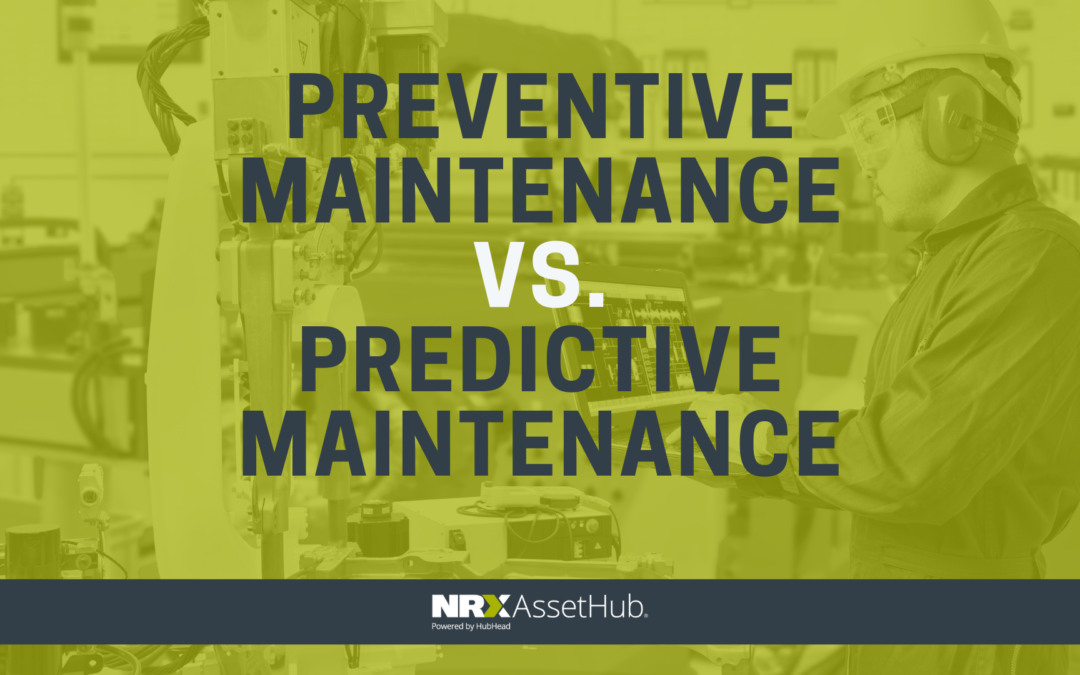IoT is changing the way data practitioners are able to make data-driven decision-making strategies. Asset-intensive organizations cannot achieve excellence in operations unless they know where and when to pay attention. Today, asset-intensive businesses want to be one step ahead on their maintenance. They want to optimize repair strategies and understand more than simply why something happened. They want to determine the condition of their equipment to foresee a need for maintenance in the near future. In doing so, they can make informed decisions about future repairs. They want to shift from preventative maintenance to predictive maintenance.
Preventive vs. Predictive Maintenance
Preventive maintenance is a time-based approach in which maintenance activities are carried out at fixed time intervals to reduce the risks involved with equipment failure. Predictive maintenance monitors the performance and condition of equipment during normal operation to reduce the likelihood of failures.
Pros of Preventive Maintenance
- Improves equipment reliability
- Reduces unplanned downtime due to sudden equipment failure
- Minimizes the number of major repairs
- Increases life expectancy of important assets
- Improves the safety and efficiency of a manufacturing workplace
Pros of Predictive Maintenance
- Cuts down maintenance costs
- Significantly reduces unexpected failures
- Drastically decreases overhaul time
- Reduces spare parts inventory
- Improves machinery mean time between failures
- Mitigates against “Critical Callouts”
Reasons for the Rise of Predictive Maintenance to the Forefront of the IoT Industry
- Modern machinery often comes with embedded computer chips to control and take readings from the machine. This data is readily available to be captured and stored.
- With new machines; their embedded sensors and new information technologies, the cost (data, effort, and monetary) to implement predictive maintenance has been significantly reduced.
- The inter-connectivity between machines through the Internet of Things has made it possible for companies to shift towards predictive maintenance.
- Vast amounts of data availability have also helped companies implement analysis points within their structure.
Types of Conditional Monitoring in Predictive Maintenance
Predictive maintenance requires conditional monitoring; online, periodic and remote.
Online condition monitoring is the continuous monitoring of machines or production processes, with data
collected on critical speeds and changing spindle positions.
Periodic condition monitoring gives insight into changing vibration behavior of installations with a trend analysis.
Remote condition monitoring allows equipment to be monitored from a remote location, with data
transmitted for analysis.
Optimizing Your Maintenance Strategy with NRX AssetHub
The bottom line is that predictive maintenance strategies are much better than preventive maintenance, but realistically having any optimized maintenance strategy is better than none. Do what is practical and economical for your business. If you are thinking of implementing predictive maintenance, make sure your data is clean first. Preventive maintenance can also be incredibly successful if the maintenance strategy is implemented correctly.
Whether your company still operates with a run to failure or has no current maintenance strategy, our experts are here to help. NRX AssetHub can help your company deal with planning and maintenance challenges. NRX will help you in reducing your unplanned downtime, optimize maintenance plans, and help you in extending the asset life.
Book a demo today or check the solutions we offer on our website!
Share this article


